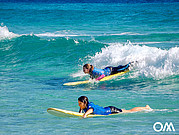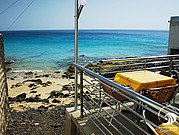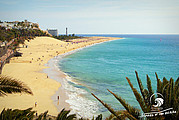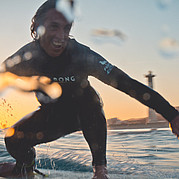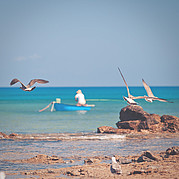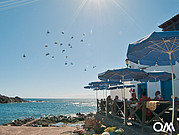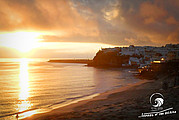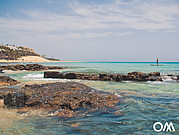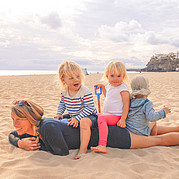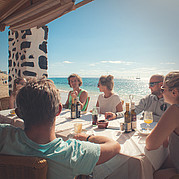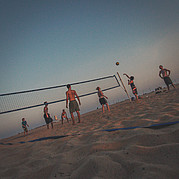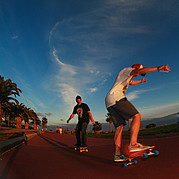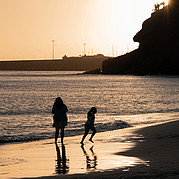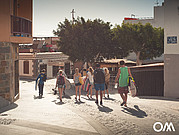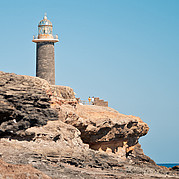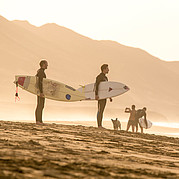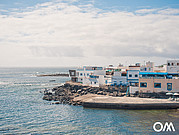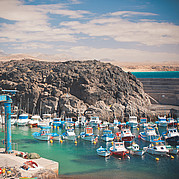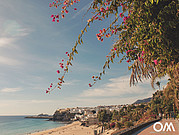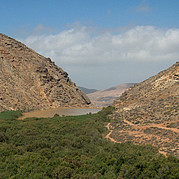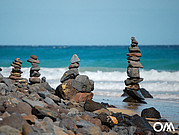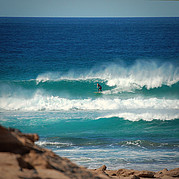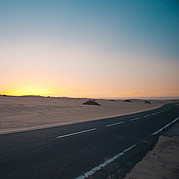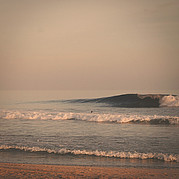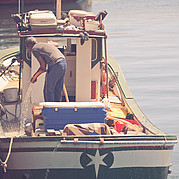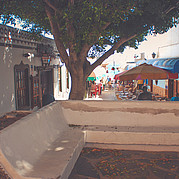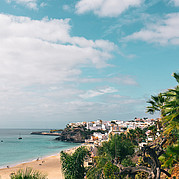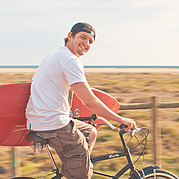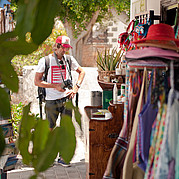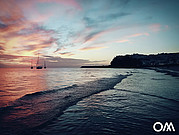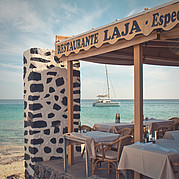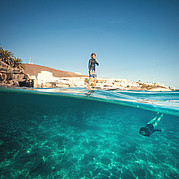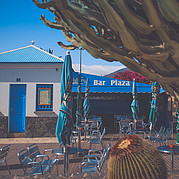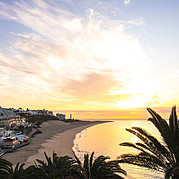Surfing at Cruz Roja in Jandia on Fuerteventura
The southern peninsula of Fuerteventura is known for its beautiful, long sandy beaches.
What few people know is that the southernmost point of the island is at the height of the large Jandia lighthouse in Fuerteventura.
Good waves often break on the broad white sandy beach in front of the lighthouse and the salt marshes of Jandia. Mostly when the waves on the west coast, for example in La Pared, are too big to surf.
The wave in Jandia is called "Cruz Roja" (Spanish for red cross) because it breaks on the beach at the height of the former lifeguard house. A Red Cross flag used to fly here.
For many surfers in the south of Fuerteventura, the Cruz Roja is one of the best waves on the island. When the conditions are right, this wave breaks like the famous point breaks on the Australian Gold Coast.
Directions to Jandia in Fuerteventura
Driving to Jandia is super easy and works even without a sat nav. If you are coming from La Pared, Costa Calma or further north, simply follow the motorway towards Morro Jable.
The motorway ends shortly before Jandia at a roundabout. Follow the road in the direction of Morro Jable. Shortly afterwards you will pass under a bridge and from here the road goes downhill. If the Cruz Roja is running well, you can already see the first waves crashing onto the coast from here.
Park your car at the level of the whale skeleton and also use the beach access that is here. You can get to the beach via a long wooden walkway that leads across the green salt marshes. It is also worth going directly to the beach to check out the waves. Because often surfable waves break in Jandia that cannot be seen from the road.
The waves at Cruz Roja in Jandia, Fuerteventura
The sandbanks in Jandia on Fuerteventura often change during the year. Violent storms with strong waves from different directions can shift large amounts of sand on the south coast. For example, the beach in front of the restaurants in Morro Jable is sometimes 50m wide and other times it disappears completely.
My observation of the past years is that the smaller the beach in Morro Jable, the bigger the sandbank of Cruz Roja usually is. And the better are the waves there.
The waves of Cruz Roja almost always break from left to right and are therefore called "right waves".
As the amount of sand changes, so does the position, length and shape of the waves. Generally, there is a steeper wave directly in front of the yellow lifeguard house. This is where the locals usually surf. To the right of the lifeguard tower, a little further up the beach, waves also break. These waves are usually a little longer. But they are a bit flatter.
On good days, both waves combine to form a single, long wave.
Small tip: Often the wave in front of the lifeguard hut breaks in such a way that there is also a short left-hand wave there. If the right-hand waves get too crowded, you can still ride a few short left-hand waves here.
In what conditions do you surf the Cruz Roja in Jandia?
The beach of Jandia on Fuerteventura is also the southernmost point of the island. The waves from the Atlantic usually come from the northwest to west. This means that the waves have to come so far from the west that they are not shielded by the last part of the island.
Another scenario is when the waves on the west coast are so big that they wrap around the island and then break as smaller waves on the beach of Jandia.
It can also happen in summer that waves break in Jandia that come from the southern hemisphere. This swell is caused by violent storms in the South Atlantic. The European spring and summer are the most likely times for southern swells.
The Cruz Roja waves in Jandia usually break from low to mid tide. Depending on the size of the waves, you can also surf at high tide. However, at moderate wave heights, the waves break too close to the beach at high tide.
At low tide, you can also surf in the white water, further to the right of the lifeguard house.
What do you have to watch out for when surfing in Jandia on Fuerteventura?
Unlike other surf spots and beaches, there are practically no dangerous currents, cliffs or stones in the water in Jandia.
Perhaps this is what makes the waves in Jandia a little dangerous for inexperienced surfers. It's very easy to get right behind the broken waves in Jandia, even with dry hair. You can paddle around the waves further to the right at their start. If you then drift back a little to the left into the bay, you can sit in the line up on big days with dry hair. However, waves can roll in here that are clearly overhead.
Every surfer knows his own surfing level best and everyone in the line up must know the priority rules of surfing. For the locals, Jandia is a well-guarded treasure. When the waves in Cruz Roja are very big, only surfers who can handle the wave should start at the peak (beginning of the wave). It is not uncommon for professional surfers from other Canary Islands to be at the spot.
These surfers mainly look for the last section of the wave, which runs close to the beach in front of the lifeguard house. Here the waves get high and very hollow, so that tubes also form for surfing. However, the waves break into extremely shallow water here. Although the bottom is entirely sand, a hard fall can cause some pain including broken bones.
With all the precautions and priority rules you should follow when surfing the main wave in front of the lifeguard house, it should be mentioned that there are always smaller waves breaking in Jandia. Just walk a little to the right down the beach.
